Paula R.C. Readman's Blog, page 41
June 30, 2021
One-Sentence Reviews: From Priscilla Bettis.

An amazing place to read reviews by the author and book review Priscilla Bettis. Please check it out.
Thank you so much for taking the time, Priscilla to read and review my work.
These are the books I read in April, May, and June along with a one-sentence review of each. (And what’s with today’s feature image?) Alpha by author…
One-Sentence Reviews: My 2nd Quarter 2021 Reads
June 29, 2021
New Seeking the Dark Book Trailer
Are You Ready?
Click here for book link: Seeking the Dark:Fingers crossed this uploads and plays okay.
June 28, 2021
Art for Art’s Sake
Yesterday I could have scream and stamped my feet in frustration! It was so annoying to have spent most of the day editing and creating a video of our trip to Colchester to share with you only to find I couldn’t view it on my iPhone or iPad. My iPad Norton even warned me not to view it! I have Norton on all three devices that I used including the main computer on which I made the video. Once I removed the video, and replace it with the photos Norton allowed me to view my blog with no problems. Just crazy, and I have no idea, why. I just hope it allows me to share and view today’s post.
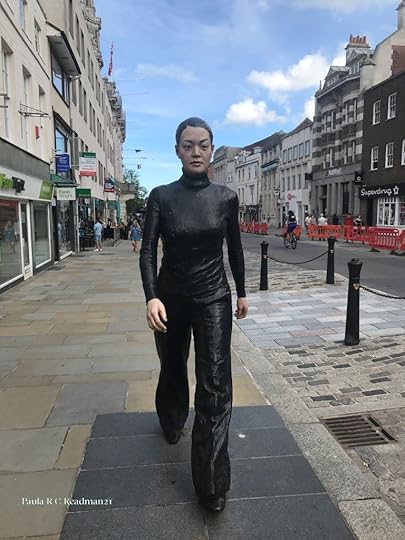

While in Colchester two modern pieces of art work caught my eye. A striding woman and a man in a suit and tie. The British sculptor Sean Henry is based in Hampshire, England and focuses on everyday people. Editions of Walking Woman can be found in London, Oslo, Bad Homburg and Colchester, Essex. All Henry’s portraits are anonymous people and he describes the theme of his work as “the tension between the making and staging of figures that seem to belong to the real world, and the degree to which they echo our experiences and sympathies.”
The Walking Woman towered over me as she stood 7ft high. She is described by the artist as walking with direction and purpose. The Man with Cup, on the side of the building, stands at 4ft 6in. Both are made in bronze which has been painted and were erected in 2017.
Have a great day, and I shall be back to chat with you again soon.
Art for Art Sake
Yesterday I could have scream and stamped my feet in frustration! It was so annoying to have spent most of the day editing and creating a video of our trip to Colchester to share with you only to find I couldn’t view it on my iPhone or iPad. My iPad Norton even warned me not to view it! I have Norton on all three devices that I used including the main computer on which I made the video. Once I removed the video, and replace it with the photos Norton allowed me to view my blog with no problems. Just crazy, and I have no idea, why. I just hope it allows me to share and view today’s post.


While in Colchester two modern pieces of art work caught my eye. A striding woman and a man in a suit and tie. The British sculptor Sean Henry is based in Hampshire, England and focuses on everyday people. Editions of Walking Woman can be found in London, Oslo, Bad Homburg and Colchester, Essex. All Henry’s portraits are anonymous people and he describes the theme of his work as “the tension between the making and staging of figures that seem to belong to the real world, and the degree to which they echo our experiences and sympathies.”
The Walking Woman towered over me as she stood 7ft high. She is described by the artist as walking with direction and purpose. The Man with Cup, on the side of the building, stands at 4ft 6in. Both are made in bronze which has been painted and were erected in 2017.
Have a great day, and I shall be back to chat with you again soon.
June 27, 2021
The Ancient City of Colchester
Yesterday, my husband took me for an afternoon outing in Colchester. It was the first time we’ve been out somewhere other than a quick dash to the shops for shopping, to get our vaccinations or a flying visit to family or friends to deliver Christmas presents or birthday gifts. We wandered in and out of the shops and around streets in bright sunshine, and had a bit to eat in a fancy dessert café. After two years of not going anywhere, it was lovely to chat with the shop assistants and almost felt normal apart from the fact we were all wearing masks. As we were walking along the path I saw stones, bits of red tiles and oyster shells on the pavement, which I gathered up. Later, I found out there had been a burst water pipe that had washed the old Roman wall remains down the hill.
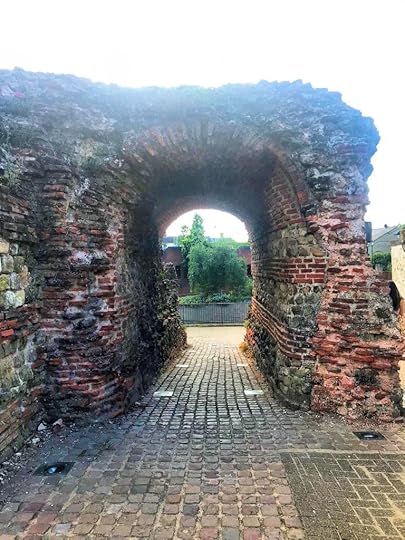 Balkerne Gateway
Balkerne GatewayMy village isn’t far from the main arterial road that joins two Roman settlements in this part of Britain, Chelmsford, the town where I grew up, and Colchester which has always been a garrison town. Colchester takes its name from the Celtic fortress of Camulodunum, meaning Stronghold of Camulus, a deity of the Celts that the Romans could identify their god of war, Mars with when they took over the hill top fortress. The port of Colchester also allowed the Romans to have access to the rest of the world too. The oyster and fishery in the estuary at Colne and Pyfleet along with salt from Maldon made Colchester an ideal place for the Romans to establish a city.
In AD 60 Boudicca, the queen of the Iceni rebelled against the newly ensconced Roman rulers of Britannia. One of the queen’s first acts was to destroy Camulodunum when the Roman legions were away on a campaign. Unnerved by the ease in which the queen was able to take the settlement the Roman authorities set about building a wall around the town. The high defensive enclosure of 2800 metres long, 6 metres high and an average 2.3metres wide took an estimated 40,000 tonnes of building material to complete. Not all the material for the wall was sourced locally. Lime to make the mortar was brought in from Kent. The core of the wall was simple rubble, with carefully arranged courses of septaria stones (compacted clay) which was brought in from Walton-on-the Naze and Harwich, and along with red bricks. The clay to make bricks was dug locally. The whole area was heavily forested at that time, so there was a good supply of wood for firing the clay.
 The roof detail of the old library
The roof detail of the old libraryIn the slideshow of the photos I took you can see the oldest surviving roman gateway in Britain which was the main entrance into the Roman town. There’s also a smaller guardroom accessible by going down a short step. The wall in my photo shows you clearly how the Romans followed a precise pattern that incorporated parallel courses of bricks into the width of the wall to stabilise it. Then five courses of septaria stone alternating with four courses of brick and tiles
Situated at the base of Balkerne Hill, below the Roman wall, are springs and was a reservoir connected with the works at the summit of the hill where in April 1882 a jumbo water tower 105 feet high and capable of holding 220,000 gallons was erected. It took 20 months to complete. After a century of service the water tower was sold off by the water company and the tower has passed through multiple owners’ hands as their plans to convert the tower in a whole array of different things from penthouses, flats, and restaurants have been rejected.
Colchester Town Hall stands on the site where the first town hall stood in 1160. Moot Hall as it was called was replaced by a new building in 1898. The present Town Hall was the winning design in a completion and was won by John Belcher. The building design is Baroque and the Victorian tower (162ft) was presented by the industrialist James Paxman. At the top of the tower is a statue of St Helena the patron saint of Colchester. The old library was the town’s first public library and was designed by Brightwen Binyon a British architect who was born in Manchester .
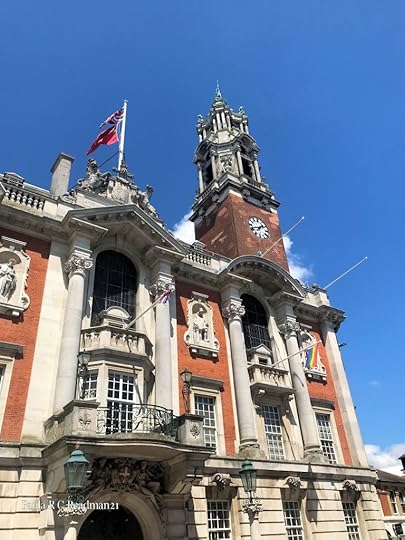
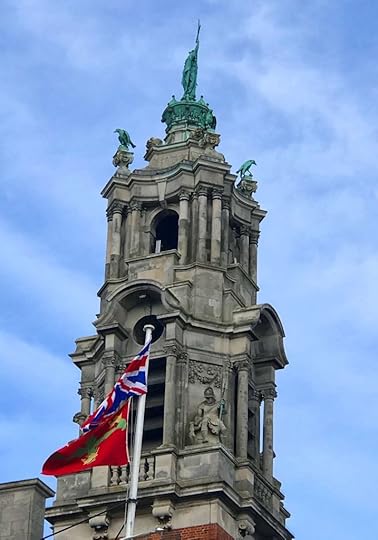
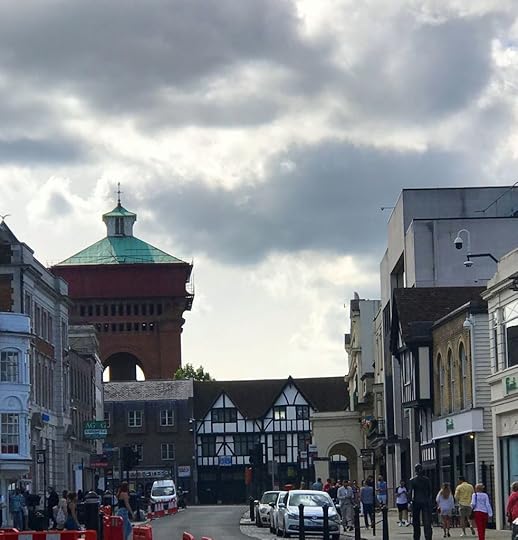


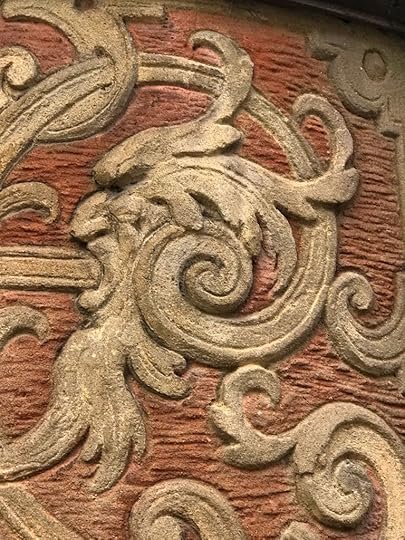



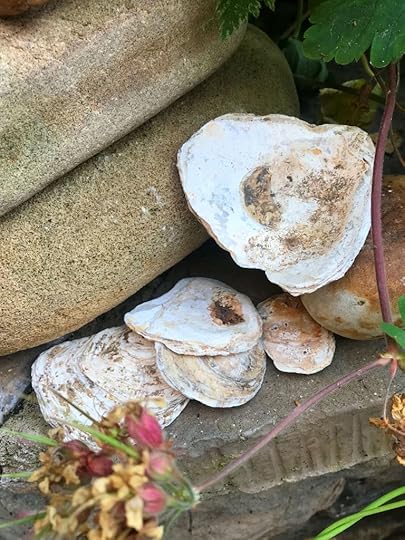
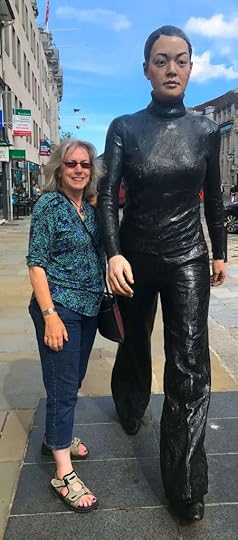
For some reason I couldn’t get the video to work and my Norton kept telling me the site was unsafe. So I’ve switched to just photos. Have a wonderful week and I shall chat again with you soon.
June 23, 2021
I’m on a Roll.

The story I was busy reducing is now rolling along with new vigour. It’s amazing what happens when your characters are let loose. The word count is growing nicely now.
I have the go ahead to take it up to 20k, which will be easily reached in no time at all. Now the restraints are off I’m loving the freedom and my mind has gone into overdrive. Yesterday, I searched the internet for an abandoned house to used as inspiration to give more details to the one in the story, and found this amazing gothic house in Belgium.
 Taken off Google an abandoned house in Belgium.
Taken off Google an abandoned house in Belgium. What stories it could tell! It must have looked stunning when it was first built. The craftsmanship that when into making each brick and the glass for the curved windows. The fancy iron work and stone work must have taken hours to create. The interior must have been as beautiful as the outside. I hope whoever lived in it had a wonderful life there.
Our imagination works overtime when we come across such pictures. I’m off to do more writing and editing. Have a great day.
Chat again soon.
June 22, 2021
Short But Not So Sweet
 Photo by Mitja Juraja on Pexels.com
Photo by Mitja Juraja on Pexels.comThere I was busy editing a story for a submission call-out. It was a tale I originally wrote in 2019 and was to be part of three interlinking stories. This one being the first one of the three. The second story sits on my computer unfinished, while the third is published. Though the stories were originally going to be linked by the main character, they are very much standalone dark tales.
Over the weekend and yesterday, I was busy reducing the word count and tightening up the storyline when suddenly I found it needed to be longer. I was unable to add in what was needed for the submission call-out I thought the story would be suitable for with a few tweaks here and there. It just wouldn’t work and would have changed the dynamics of the tale completely.
 Photo by Kammeran Gonzalez-Keola on Pexels.com
Photo by Kammeran Gonzalez-Keola on Pexels.comI don’t know how it is for other writers, but for myself I can’t force my work to go in another direction unless it happens organically. When creating a storyline my characters proceed through a series of interlinking actions as the story unfolds. If you suddenly change one action the whole thing falls apart. For me, it would be better to write a new story with what the submission guideline wanted.
Instead of reducing the word count and add in a grisly scene which wasn’t part of the original storyline I decided there and then to change my mind. I began to enlarge my original story by adding more detail to the scenes already there and building more tension as the characters moved through their tale. This allowed the short story to develop into a novella as it gave the characters their own voices to tell their dark tale.
 Photo by Luis del Ru00edo on Pexels.com
Photo by Luis del Ru00edo on Pexels.comThis is what I love so much about writing. When the spark of creativity is ignited everything just drops into place. Once you go with the flow, and give your characters the reins your writing becomes more powerful.
Have a great day whatever your plans, but always remember to go with the flow.
After The Rain
 Towards the Gravel PitsPurer pleasures I never felt than in gazing upon the wild scenery of Nature, in all her grandeur and beauty.
by John James Audubon (born Jean-Jacques Rabin; April 26, 1785 – January 27, 1851) was an American ornithologist, naturalist, and painter.
Towards the Gravel PitsPurer pleasures I never felt than in gazing upon the wild scenery of Nature, in all her grandeur and beauty.
by John James Audubon (born Jean-Jacques Rabin; April 26, 1785 – January 27, 1851) was an American ornithologist, naturalist, and painter.
Yesterday morning was the first dry morning we’ve had for quite a while, so we were able to follow the footpaths without getting wet feet or trousers legs. There was lot of wild flowers to see hidden among the grasses. I think I shall have to put together a video showing all the different types of grasses that grow around this area, but for now I have put together one to showing you some of the flowers I saw. First some extra information about some of the plants and their history.
 Biting Stonecrop
Biting StonecropBiting Stonecrop: this amazing, diminutive plant has a long relationship with humans. From superstitions to medical uses. It was believed if Biting stonecrop was planted on the roof of houses and buildings it would ward off thunderstorms. The seventeenth-century diarist, John Evelyn often add young and tender leaves of this plant to his salads for its peppery taste. The country name for the plant was wall pepper which might explain why it’s known as biting stonecrop. The plant had an important use in first-aid for treating cuts and wounds as its succulent growth made it suitable for poultices.
 Hedge woundwort
Hedge woundwortHedge Woundwort: This hidden splash of colour that hides in shady places in woods, hedgerow and on waste grounds was once used throughout history from the ancient Greeks to treat wounds and to stem bleeding. John Gerard, the famous 16th century surgeon witnessed a man cutting himself badly on a scythe. the man made himself a poultice with woundwort. Gerard was so impressed with how effective the man self-treatment was, and how the wound healed over the course of a few days, he went on to use the plant in his own practice. Hedge Woundwort has an unpleasant smell and was once planted in churchyards to ward of evil spirits. Modern experiments on the plant has revealed woundwort volatile oil contained within the plant has antiseptic qualities.
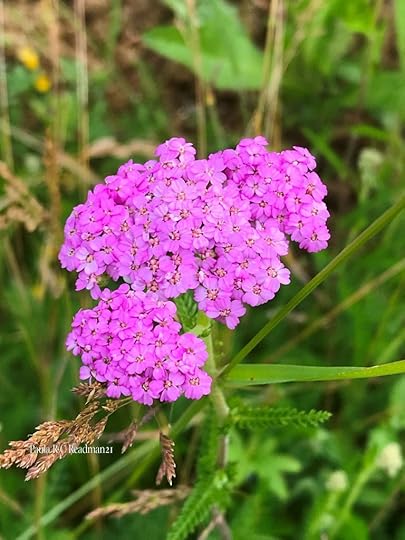 Yarrow
YarrowYarrow: Here is another plant that has a long history with being known as a woundwort. The Greek hero Achilles was said to use this plant to cure wounds. In Anglo-Saxon Britain a poultice of yarrow mixed with grease was used to purged and heal wounds. The entire plant is gently aromatic and is said to help relieve migraine. The plant is used in herbal tea and is said to help with melancholy and depression. Modern studies have shown that it does contain anti-inflammatory and sedative properties.
 Jack-go-to-bed-at-noon
Jack-go-to-bed-at-noonJack-go-to-bed-at-noon: This bright yellow flower is so named because it open very early in the morning and closes up around mid-day. It is also known as Goat’s Beard, after the feather tufts on the large downy seed clock. In the past the long, brown tap-roots of this plant were dug up, cooked and eaten like parsnips because of their sweet taste.
I do hope you enjoy taking a walk with me by watching the slideshow I have put together. The area shown in the video is where a new road will eventually come through in the near-future, once the gravel pit is exhausted. I hope to make more of these videos for you.
Now I’m off to finish editing a short story, and then hopefully, I shall get back to writing some more of the Granny Wenlock novel.
It’s coming together, slowly and I think the tone of it is starting to develop, which I’m happy with. My writing group starts next week. so I shall be busy cleaning the house, which has been a little neglected. I’m hoping the weather improves so we can sit outside. With all the rain we’ve had the garden needs sorting out again.
Busy, busy, busy.  At least, it keeps me out of trouble.
At least, it keeps me out of trouble.
Keep safe everyone.
June 19, 2021
Water, Water Everywhere, but not a drop to drink

Here in England everything is changing. From our way of living to the weather. Okay, so Mother Nature has control of the weather from day to day, season by season, thank goodness, but we humans are interfering with our thoughtless behaviour. At the moment, and over the next few days in my part of England we are expecting more rain. It must be remember that being part of Britain, England like the rest of the British Isles is known for being a green and pleasant land. As the English poet, William Blake, (28 November 1757 – 12 August 1827) tells us in his powerful poem Jerusalem.
And did those feet in ancient timeWalk upon England's mountains green?And was the holy Lamb of GodOn England's pleasant pastures seen?It’s the power of the rain that keeps the land around me green and pleasant, but over the last few years our winters and summers have been very dry. Rivers that were once fast flowing and drove the watermills along their banks and were full of wildlife have slowed or disappeared altogether as they have been used to water crops. The increase in the population and more housing means water is a precious commodity and in danger of drying up too.
 The Blackwater River at Bradwell
The Blackwater River at BradwellThe Blackwater River rises in the North West of Essex as the river Pant, and makes its way as a stream to Braintree where its name changes to the Blackwater for the rest of its journey to the sea. On its way the Blackwater passes through Stisted, Bradwell, Coggeshall, Coggeshall Hamlet, Feering, Kelvedon, near Witham, Wickham Bishops, Langford to Beeleigh where it meets the Chelmer. All of these place once had watermills stand on its banks to grind the wheat from local farmers into flour for its community. Many of these mills have gone or been converted into houses. In the pictures below you can see what once would have housed waterwheel of West Mill in Coggeshall. The water here is no more than a trickle. It would never drive a waterwheel enough to create flour for a community today.
 The Coggeshall West Mill Chase
The Coggeshall West Mill Chase
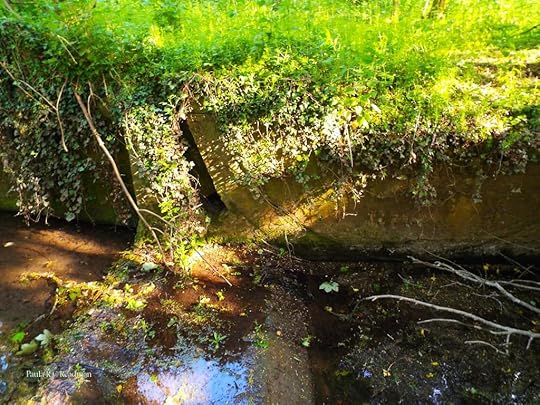 The Water Mill Wheel Housing
The Water Mill Wheel Housing In 1797 the Chelmer & Blackwater Navigation company canalised the rivers Chelmer and Blackwater from Springfield Basin in Chelmsford to the sealock at Heybridge, the site of the old Heybridge mill (now known as Heybridge Creek) before passing through a sluice gate into the tidal Blackwater Estuary at Maldon. The length of the canal is 13.75 miles (22.13km) and was used in the past to bring grain from Radwinter a village, in the Uttlesford district in Essex to Beeleigh Abbey in Maldon, Essex
 Heybridge Basin
Heybridge Basin
 Blackwater Estuary
Blackwater EstuaryAs a child I grew up at Moulsham Mill. The mill stand on the Chelmer river, the river which gives the city of Chelmsford its name. As Chelmsford was once a settlement which built up around the main river crossing on the Chelmer river at a ford. While looking at early records of Moulsham Mill dating back to the 1600’s. The owner of the Moulsham Mill at that time was up before a local judge due to his lack of repairs to the wooden bridge at the crossing on the main thoroughfare between Colchester and Chelmsford now known as the A12. When I was a child, the Chelmer river often flooded the meads and the town centre too. This has become a thing of the past as flood defences were put in place but also a drier climate too.
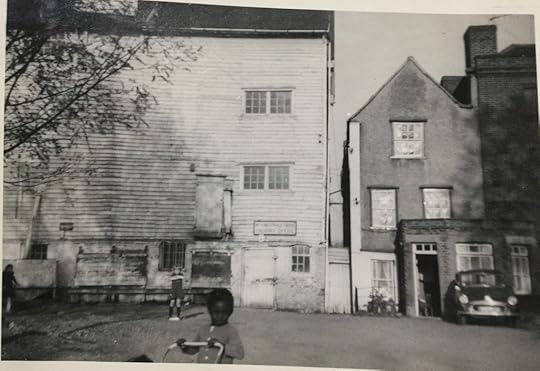 Moulsham Mill, Baddow Road
Moulsham Mill, Baddow RoadThe video below shows you how dry England was in 2018. As I drove my son to work, our journey through the village of Bradwell, Essex. By chance my onboard car camera pick up a conversation on the radio where water charity speaker was talking about the world water shortage as we drove through a very parch landscape. Don’t be fool by all the heavy rain we’re having now because the planet is warming up and populations are growing as we cut down trees, dam rivers and continue to pollute our planet. Fresh drinking water will be more valuable than gold or silver in the future.
Please check out this amazing book: The Future may not be ours if we don’t act soon.
The Future Brokers Blurb:
Nothing can prepare you for a future where spies, governments and Artificial Intelligence vie for power and drive a love story like no other in The Future Brokers
It’s 2050 and George Williams considers himself a lucky man. It’s a year since he—like millions of others—was forced out of his job by Artificial Intelligence. And a year since his near-fatal accident. But now, George’s prospects are on the way up. With a state-of-the-art prosthetic arm and his sight restored, he’s head-hunted to join a secret Government department—George cannot believe his luck.
He is right not to believe it.
George’s attraction to his beautiful boss, Serena, falters when he discovers her role in his sudden good fortune, and her intention to exploit the newly-acquired abilities he’d feared were the start of a mental breakdown.
But, it turns out both George and Serena are being twitched by a greater puppet master and ultimately, they must decide whose side they’re on—those who want to combat Climate-Armageddon or the powerful leaders of the human race.
 The Future Brokers Link Here
The Future Brokers Link Here
June 17, 2021
A Walk On A Wet Morning.
 Bradwell Church, Essex, EnglandOh, shall I never, never be home again!Meadows of England shining in the rainSpread wide your daisied lawns: your ramparts green with briar fortify, with blossom screenTill my far morning - and O streams that slow and pure and deep through plains and playlands,
From Thoughts of England by James Elroy Flecker Born 05 Nov 1884-
Bradwell Church, Essex, EnglandOh, shall I never, never be home again!Meadows of England shining in the rainSpread wide your daisied lawns: your ramparts green with briar fortify, with blossom screenTill my far morning - and O streams that slow and pure and deep through plains and playlands,
From Thoughts of England by James Elroy Flecker Born 05 Nov 1884-03 Jan 1915 was a British novelist and playwright. After the heavy rain we had last night following the footpaths around the village would have been too wet, so Ana and I walked to the church via the main road. Once there we found the grass in the churchyard had been cut so we had a wander around and took some photos and I made a video.I have account on Instagram under the name of Granny Wenlock. I'm not quite up-to-speed how you use the site, but I have been making a few short videos that contain a positive message, and the ones I've made so far have been well received. Within the videos I've added messages from Granny Wenlock as I see her as being a wise woman. As I've wanted to share my videos and book trailers straight on my blog I've upgraded my blog account. So I hope you will enjoy watching and hearing the sounds of an English graveyard. Here's the one I've made today.
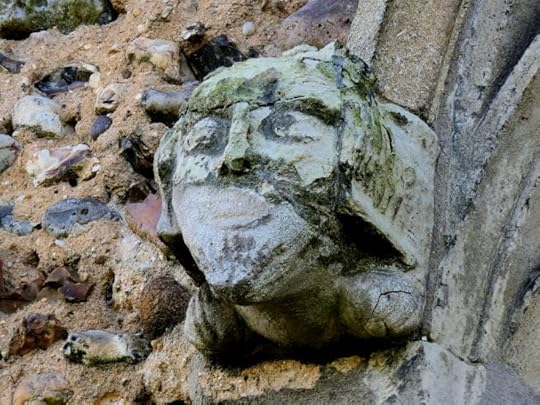 A Face from the Past
A Face from the Past



